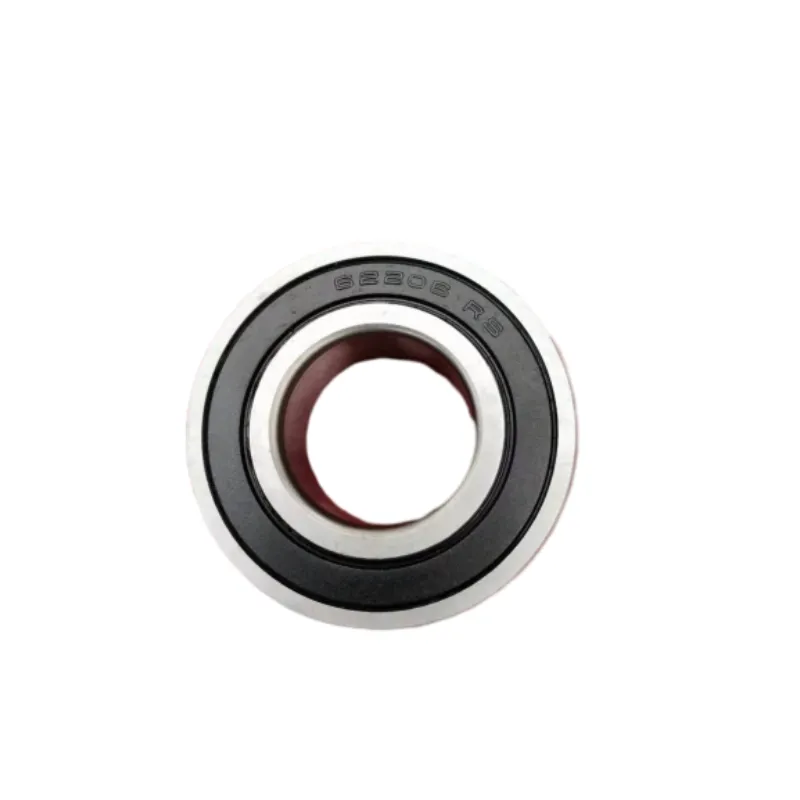
Dec . 04, 2024 21:07 Back to list
ceramic thrust bearing
Ceramic Thrust Bearings Revolutionizing Mechanical Efficiency
In the realm of mechanical engineering, bearings play a crucial role in the performance and longevity of machines. Among the various types of bearings, thrust bearings are essential for supporting axial loads, which allows for the smooth operation of rotating elements. With advancements in technology, ceramic thrust bearings have emerged as a revolutionary alternative to traditional metal bearings.
Ceramic thrust bearings are primarily composed of advanced ceramic materials such as silicon nitride (Si3N4) and zirconium dioxide (ZrO2). These materials boast exceptional hardness, low density, and impressive thermal resistance, making them ideally suited for high-performance applications. Unlike traditional steel bearings, which can suffer from wear and deformation under extreme conditions, ceramic bearings retain their shape and functionality, even in challenging environments.
One of the most significant advantages of ceramic thrust bearings is their reduced friction coefficient. The smooth surface of ceramic materials minimizes the contact area between the bearing surfaces, leading to decreased friction. This property not only enhances the efficiency of the machinery but also contributes to lower energy consumption. In industries where energy efficiency is a primary concern, the implementation of ceramic bearings can result in substantial cost savings over time.
Furthermore, ceramic materials resist corrosion, oxidation, and chemical reactions, making ceramic thrust bearings ideal for applications exposed to harsh environments, such as marine, chemical processing, and food manufacturing industries
. Their resilience against these corrosive elements ensures a longer operational lifespan, reducing downtime for maintenance and replacement.ceramic thrust bearing

In addition to their robust physical properties, ceramic thrust bearings exhibit superior thermal stability. They can withstand high temperatures without suffering from the thermal expansion that often plagues traditional metals, which can lead to misalignment and failure. This thermal resistance is particularly beneficial in high-speed applications where heat generation is unavoidable.
The lightweight nature of ceramics compared to metals also lends itself well to applications in aerospace and automotive industries. Reducing the overall weight of components while maintaining structural integrity can lead to enhanced performance, fuel efficiency, and overall operational effectiveness. As engineers and manufacturers strive to innovate and create lightweight designs, ceramic thrust bearings provide an effective solution.
Despite the myriad benefits, there are still challenges to consider when using ceramic thrust bearings. Their brittleness, although mitigated by advanced manufacturing techniques, requires careful handling during installation to avoid chipping or cracking. Additionally, the cost of ceramic materials and manufacturing processes tends to be higher than traditional bearings. However, as technology continues to advance and production scales increase, these costs are expected to decrease, making ceramics a more accessible option for various applications.
In conclusion, ceramic thrust bearings represent a significant advancement in bearing technology, offering enhanced performance, durability, and efficiency compared to traditional metal alternatives. Their unique properties make them suitable for high-stress, high-temperature, and corrosive environments, paving the way for their adoption across multiple industries. As engineers and manufacturers look for innovative solutions to improve machinery performance, the future of ceramic thrust bearings looks promising, heralding a new era of mechanical efficiency and reliability.
Latest news
-
Premium Deep Groove Ball Bearings | High Speed & Reliability
NewsAug.29,2025
-
Durable Scaffolding Clamps - Secure & Reliable Tube Connectors
NewsAug.28,2025
-
Common Failures in Thrust Ball Bearings and Solutions
NewsAug.22,2025
-
How Tapered Roller Bearings Can Take Shock Loads
NewsAug.22,2025
-
Angular Bearings in High-Precision Spindles
NewsAug.22,2025
-
The Impact of Misalignment on Cylindrical Roller Bearing Performance
NewsAug.22,2025
